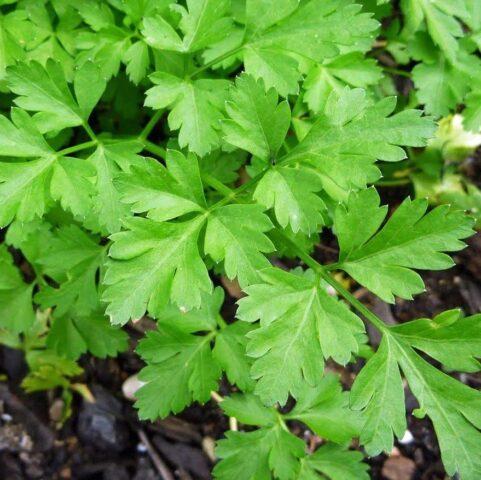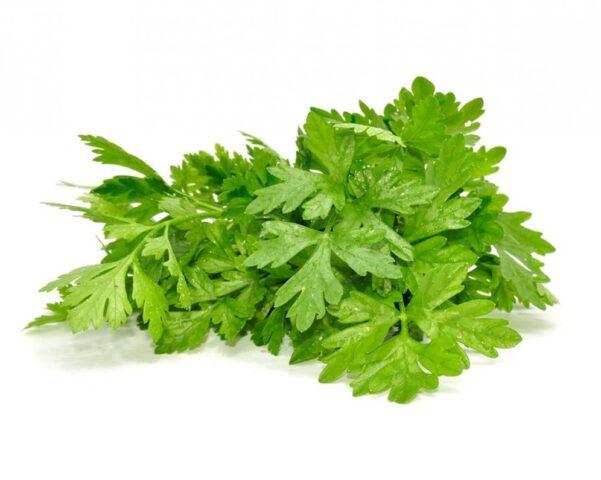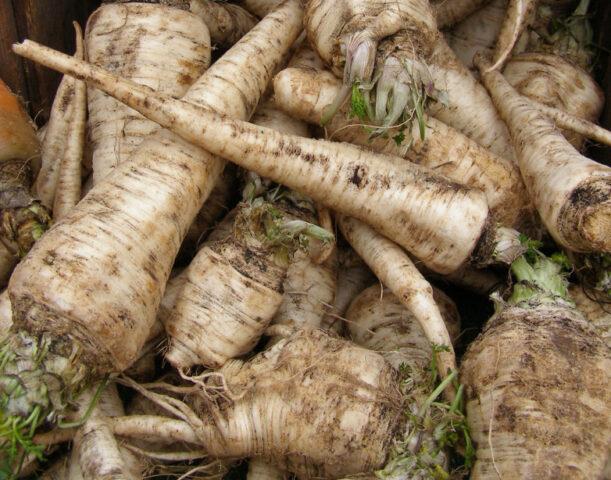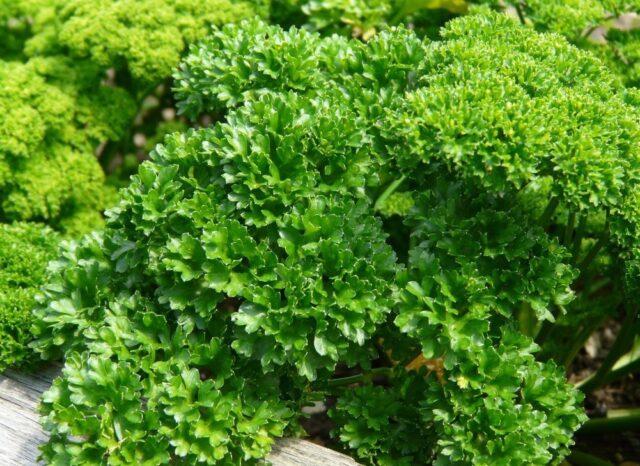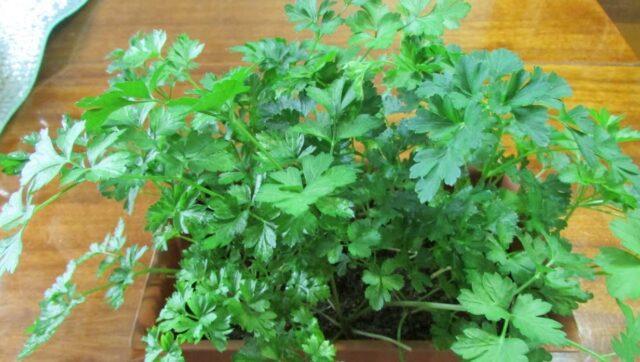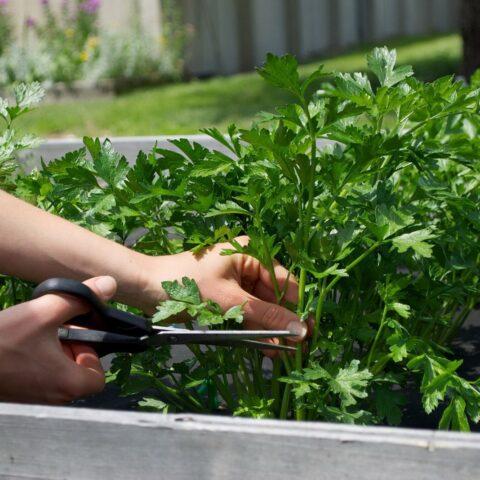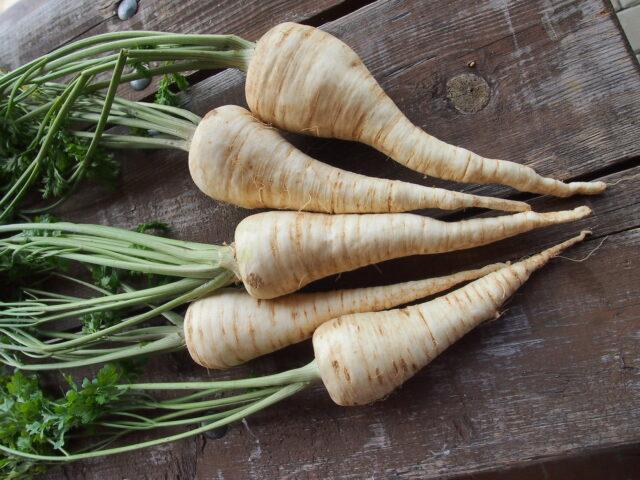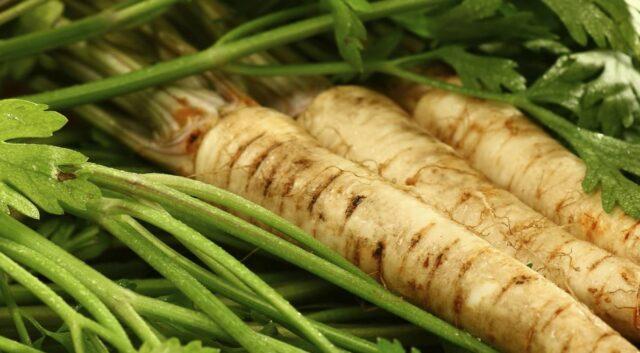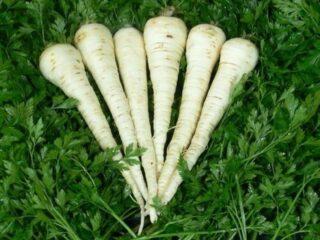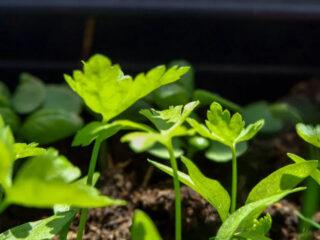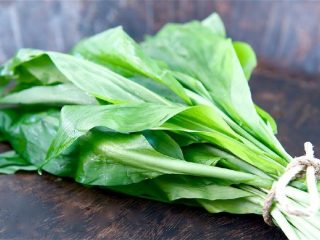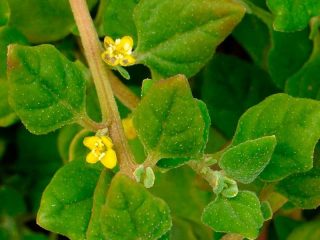Content
Parsley is a spicy culture that is popular all over the world. But it is loved not only for its pleasant rich aroma, but also for its great beneficial properties for human health. Therefore, the culture is used in cooking, as well as in medicine and cosmetology. But depending on the variety of parsley, the features of its use may differ. Therefore, when buying, you need to pay attention to this, since the plant is of two types.
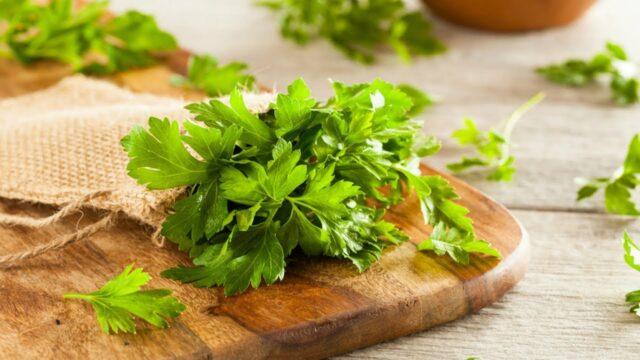
This spicy crop is superior in vitamin C to citrus fruits
Description of parsley with photo
Parsley belongs to the Umbrella family. Its close relatives are celery, carrots and dill. Parsley is cultivated everywhere in all regions, as it is not demanding to care for and is not afraid of frost.
What does parsley look like?
This spicy plant forms bushes 30-100 cm high (depending on the species). The culture has a spindle-shaped thickened fleshy root of a yellowish-white hue. The plant forms one or more upright furrowed stems that branch vigorously.
The lower leaves are ovoid, double pinnate. The upper plates on the shoots are triple-dissected.
Small flowers of white, yellow or greenish color, collected in apical umbellate inflorescences. The buds on the plant are formed in June or July (depending on the variety).
Seeds are small, elongated, brown in color, ripen in September. They remain viable for four years.
Is parsley a vegetable
The leaves and roots of this spicy culture are used for food. And many people still do not understand parsley is a vegetable or herb. And often there are disputes about this in various forums of gardeners.
Parsley is a leafy vegetable. And when growing it in order to obtain a high-quality harvest, it is recommended to remove the peduncles on the plant in a timely manner.
Is parsley perennial
This culture is two years old. In the first year after planting, it forms a root and intensively builds up foliage. And in the second season, the plant forms flower stalks and forms seeds. After ripening, they crumble to the ground and germinate, so this culture can be considered partly perennial.
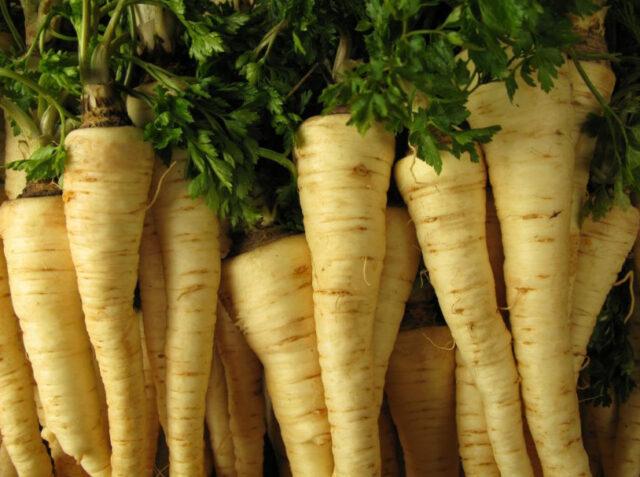
Root varieties are grown not for greens, but for obtaining bitter fruits
What is parsley
Parsley is of two types: leaf and root. In the first case, the plant directs forces to form the aboveground part. In a leafy species, the roots are thin, branched, having no nutritional value. Such parsley forms from 20 to 100 leaves. She, in turn, is subdivided into two more subspecies: ordinary, curly. In the first, the leaves have an even surface, serrated, and in the second, the segments of the plates are corrugated.
In the root species, the underground part of the plant is of nutritional value. It is used as an additive to dishes, as well as for medicinal purposes. The root crop of this type of culture is fleshy, large, weighing 100-150 g. The underground part has a white pulp.
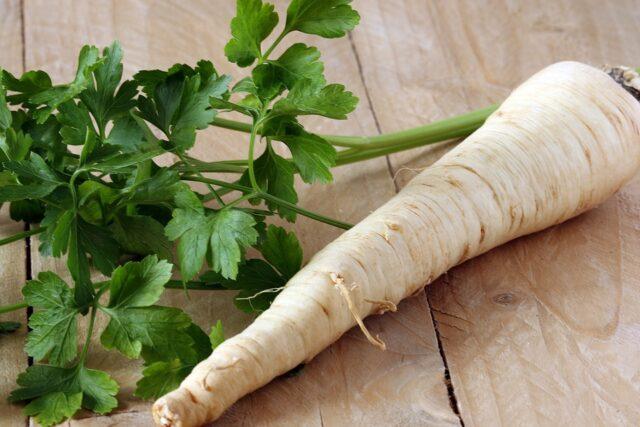
Strongly spicy aroma is present in the leaf and root species
The best varieties of parsley for herbs
Leaf parsley is very popular with gardeners. The harvest of this culture ripens even in regions with risky farming. But among the whole variety of varieties of perennial leaf parsley, there are species that significantly stand out from the rest.
Aster
The curly look was obtained thanks to the efforts of Czech breeders. The variety is characterized by a raised leaf rosette. Plates of parsley Astra (Etroselinum crispum Astra) are large, tender, strongly corrugated. The root is hard, not edible. The crop ripens in 80-90 days, and with winter planting after 5-6 months. This variety is considered versatile, ideal for growing in greenhouses and greenhouses. The yield is 5 kg per 1 sq. m.
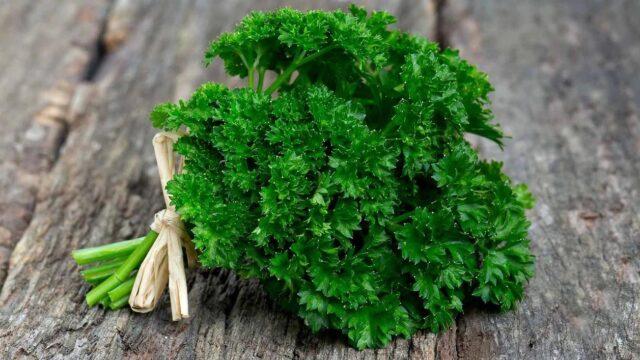
Aster very quickly builds up green mass after cutting.
Carnival
According to gardeners' reviews, this is one of the best varieties of leaf parsley. Carnival (Karnaval) has an early ripening period. This species is characterized by lush bushes. Plates at the Carnival are dark green with a smooth surface. The first crop ripens three months after germination. Forms leaves from 40 to 100 pcs.

Carnival is highly resistant to fungal diseases
Breeze
An early ripe variety of leafy curly parsley. Briz leaves are strongly corrugated, green, shiny. The first harvest ripens in 80 days. Four leaf cuts can be done per season. The height of the bushes reaches 75 cm. The yield of the variety is 2.5 kg per 1 sq. m. The view is ideal for making marinades and pickles.
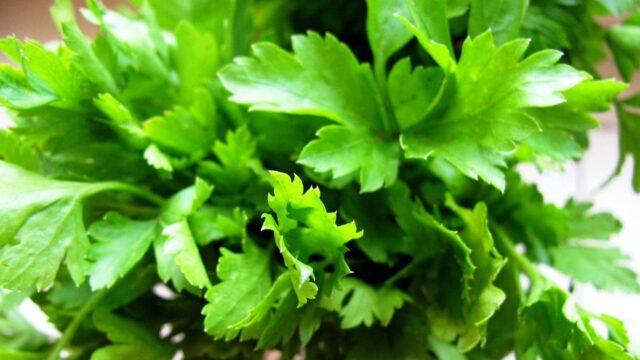
Breeze is prized for its high ascorbic acid content
Gloria
Leafy early ripening. The height of the bushes at Gloria (Gloria) reaches 25-40 cm. The first crop can be cut in 60-65 days. The variety is characterized by delicate dark green leaves, the spicy aroma of which is pronounced. Productivity - 1.7 kg per 1 sq. m.
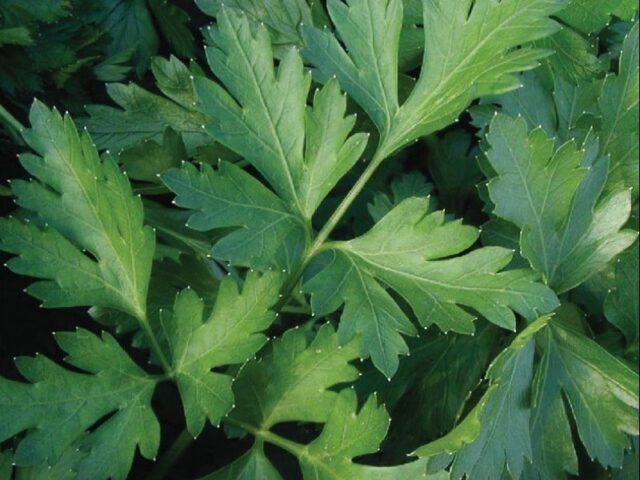
Gloria tolerates long-term fresh storage
Titanium
A Dutch variety with high productivity. It is characterized by early ripening. The first crop can be cut 70 days after germination. Bushes at Titan (Bejo) are upright, dark green leaves, large, with a delicate spicy taste.
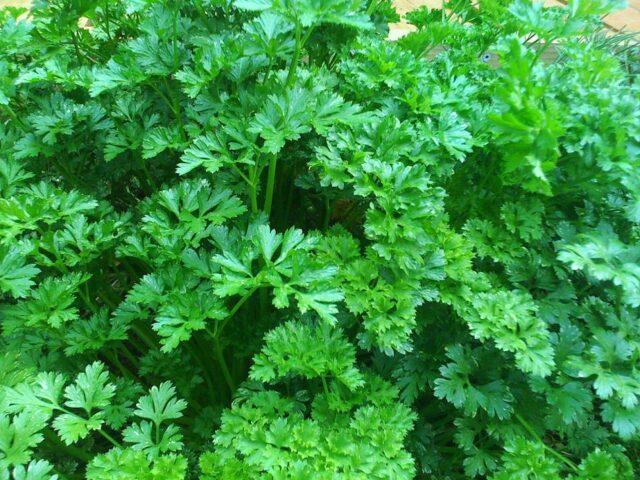
Titanium greens retain their hue even after processing
Root parsley varieties with photos and descriptions
Root parsley is recommended to be grown in fertile loose soil. Therefore, to get a good harvest, you need to prepare the garden in advance and apply organic fertilizers. But productivity depends not only on soil fertility and maintenance. Therefore, you should pay attention to the most productive root types of parsley, photos with the names of which are presented below.
Sugar
An early ripening variety of culture. The leaves are triangular, the flowers are greenish-yellow. The length of the root crop reaches 30 cm, and the diameter is about 4 cm. The yield of the Saharnaya variety is 3.5 kg. Root crops ripen in 3, -3.5 months. Forms strong, lush, spreading bushes.

Sugar Parsley forms up to 40 shoots per outlet
Berlin
This root vegetable is ideal for making marinades and pickles, which is why it is preferred by many gardeners. The harvest ripens in 140-150 days from the moment of seed germination. Root crops of Berlin parsley have the shape of a regular cone. Their average weight varies between 50-110 g. The root grows about 20-30 cm in length and reaches 4-5 cm in diameter.
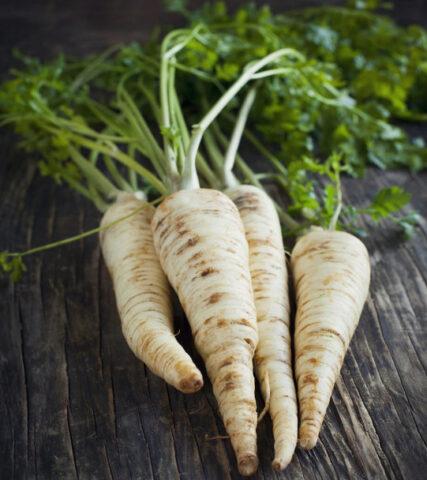
Berliner is resistant to cracking and branching
Berlin is late ripening
A variety of German breeding, characterized by juicy roots, the length of which reaches 20 cm.The pulp is white, has a pleasant taste and aroma. The growing season of Berlinia is 90-110 days. The variety is suitable for fresh consumption, freezing and drying. The average weight of root crops is about 70 g.
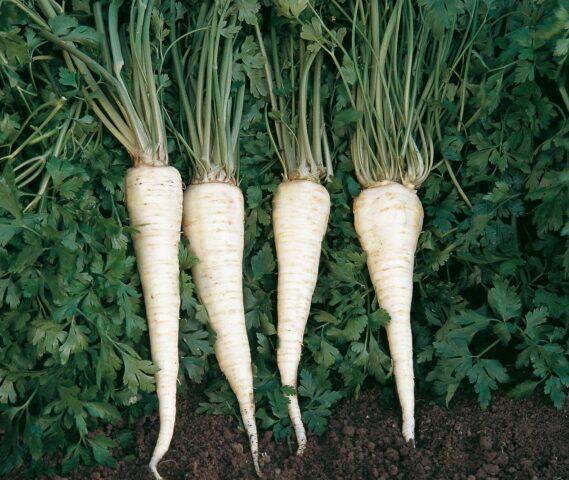
Berlin is resistant to shooting
Alba
Late-ripening variety of root parsley. The crop ripens in 3-4 months. Alba's roots are large, up to 25 cm long and weighing 220-300 g. The leaf rosette is small, consists of 12 shoots. Alba greens are high in ascorbic acid and carotene. The pulp is juicy, white, aromatic, with a pleasant spicy taste. The main advantage of this variety of parsley is that it does not branch.
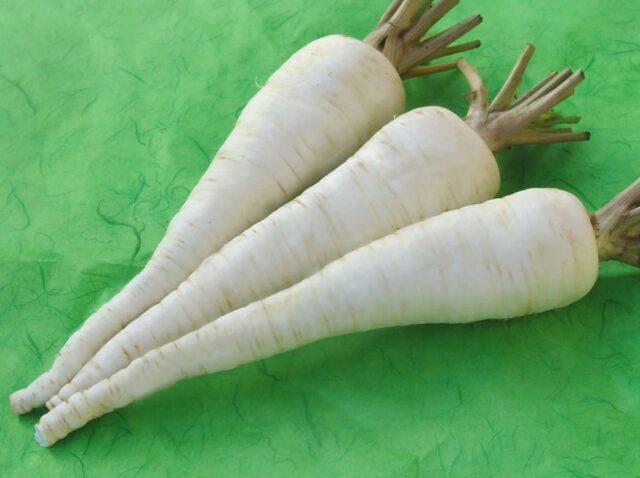
Alba pulp does not darken during processing
The best varieties of parsley for the Moscow region
The moderate continental climate of the Moscow region is excellent for growing leaf and root parsley. Therefore, taking into account the basic requirements of the crop, any novice gardener can achieve high yields.
Highly productive varieties of parsley with a photo for the Moscow region:
- Italian giant (Italyanskiy gigant). Differs in large green leaves with a shiny surface. The yield of the variety is 2 kg per season. Forms 40 to 60 shoots per outlet.
- Bogatyr. A leafy look that is ideal for aromatic greens. The growing season is 60-65 days. Suitable for growing in greenhouses and open field.
- Hamburg (Hamburg). A hybrid variety of root parsley. Suitable for long-term storage. Forms cone-shaped fruits, characterized by juicy white pulp with a pleasant taste and aroma.
Early varieties of parsley
When choosing a crop variety, the climatic conditions of each region must be taken into account. For cultivation in the central and northern regions, it is recommended to choose early species. In this case, the harvest will ripen long before the onset of cold weather.
The best early varieties of parsley for open and closed ground:
- Curly (Petroselinum crispum). The growing season is 50-70 days. The variety is distinguished by beautiful curly leaves, which increases the decorative effect of the bushes. Has a mild spicy aroma.
- Beads. Early ripening leaf variety with a raised rosette, the height of which is 35-40 cm. The growing season is 55-60 days. Leaves are medium in size, green, with a delicate aroma.
- Chastushka. It is characterized by lush, spreading bushes, the height of which reaches 40 cm. The first crop can be harvested in 57-60 days from the moment the first shoots appear. The rosette consists of 40 shoots.
- Konica. The growing season is 122-130 days. Root crops are in the shape of a triangle. They grow up to 25 cm and reach a mass of 95 g. Productivity from 1 sq. M. m. - 2.3 kg.
- Good morning. The harvest ripens in 125-130 days. Roots are long, gray-white, weighing 60-100 g. The aroma is moderate, the taste is pleasant.
Conclusion
Many varieties of parsley, despite their drought tolerance, need regular watering. This makes it possible to speed up the regrowth of greens after cutting. In the case of rooted species, it is also important to regularly loosen the soil between plantings so that the root has the correct shape and does not branch out.
